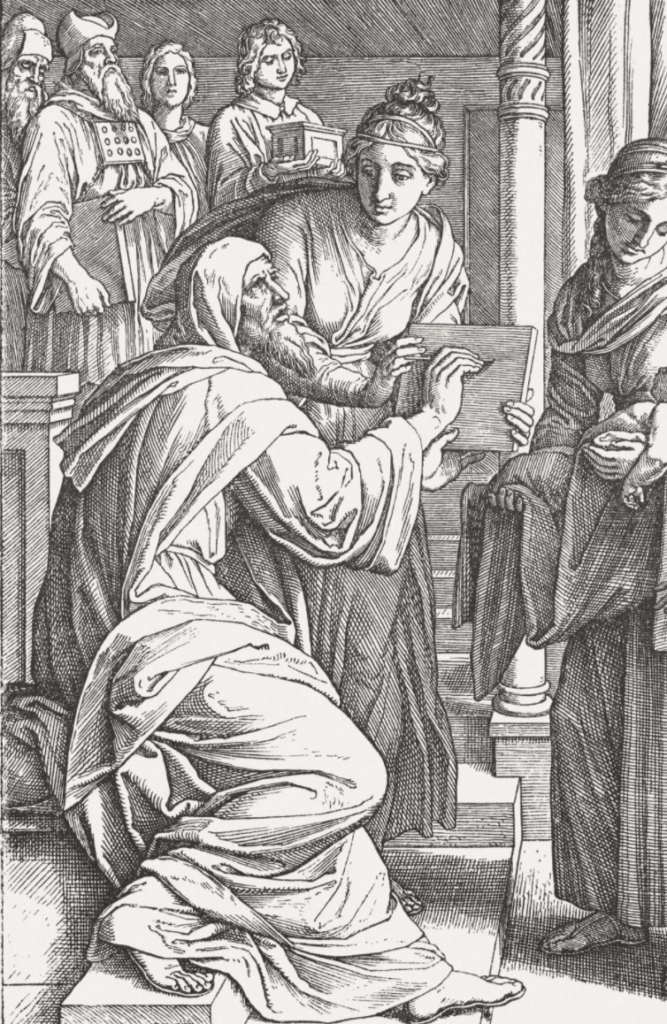Two Saints, One Day…for Lutherans, Anyway

Though their place in the biblical narrative is largely restricted to one chapter, Ss. Zechariah and Elizabeth play a pivotal role in the story of our Lord. This story surprisingly begins not with Mary, Joseph and Jesus but rather with St. Zechariah, who St. Luke tells us was a priest, a descendent of Aaron whose wife Elizabeth was also from the priestly line of Aaron (Luke 1:5). Though they were faithful to the God of Israel, they had not been blessed with the gift of children, and they were old enough to know that they could not expect to be parents (Luke 1:6-7).
Yet much as with Abraham and Sarah (Genesis 18) or Elkanah and Hannah (1 Samuel 1), the Lord intended to give Zechariah and Elizabeth a son in their old age, a son who would “be filled with the Holy Spirit” and “make ready for the Lord a people prepared” (Luke 1:15, 17), and so he sent the Archangel Gabriel to speak with Zechariah as he served in the Temple (Luke 1:5-25). This miraculous son is the saint whom we know now as John the Baptist.
Six months after Gabriel visited Zechariah to tell him about the birth of John the Baptist, he visited the Blessed Virgin Mary to give her the news of an even more miraculous child, our Lord Jesus (Luke 1:26-38). After she heard the angel’s message, Mary went to stay with her pregnant relative Elizabeth, who together with her unborn son responded with faith and joy to the arrival of Mary and the unborn Savior (Luke 1:39-45). Thus, both before and after the angelic visitation, St. Luke holds up Zechariah and Elizabeth as examples of faith for the people of God.
The first two chapters of Luke’s Gospel give us four canticles that are regularly used in the prayer of the Church: the Magnificat (Luke 1:46-55), the Benedictus (Luke 1:68-79), the Gloria in Excelsis (Luke 2:14), and the Nunc Dimittis (Luke 2:29-32). It is worth noticing that out of these four, two of them are directly connected with Ss. Zechariah and Elizabeth, the Benedictus being Zechariah’s song on the birth of his son John and the Magnificat being the song Mary sings after being greeted by Elizabeth. These two saints, then, though they are only found in one chapter of the Bible, are deeply connected with the Church’s liturgical life.
A Brief History
While Ss. Zachariah and Elizabeth have been honored in the Church from the earliest centuries because of their association with St. John the Baptist, the Church has not always been unified with regard to the question of the day on which they are remembered.
Part of this difference in custom arises from the issue of whether the two should be commemorated together or separately. In the Roman Catholic Church, they are assigned two separate days, one on September 23 and the other on November 5. Lutherans together with Anglicans and Eastern Orthodox Christians commemorate them together on the same day, September 5.

Collect
O Almighty God, who hast knit together Thine elect in one communion and fellowship in the mystical body of Thy Son Jesus Christ, our Lord: grant us grace so to follow Thy blessed saints in all virtuous and godly living, that we may come to the unspeakable joys which Thou hast prepared for those who unfeignedly love Thee; through the same, Jesus Christ, Thy Son, our Lord, who liveth and reigneth with Thee and the Holy Ghost: ever one God, world without end. Amen.
Lessons
Resources
Issues, Etc. interview with the Rev. Peter Bender on Ss. Zachariah and Elizabeth
Propers found in Daily Divine Service Book: A Lutheran Daily Missal, edited by the Rev. Heath Curtis
References:
1. Treasury of Daily Prayer. Concordia Publishing House. 2008.
Images:
1. The Birth of John the Baptist, Julius Schnorr von Carolsfeld, Germany, 1890.
2. Zechariah gives name to John the Baptist, Riccardo Cessi, Italy, 1892.



